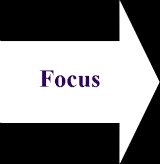Home Page | Blog | Managing | Marketing | Planning | Strategy | Sales | Service | Networking | Voice Marketing Inc.
Disaster Recovery Scenarios
for Business:
Step 1: Use A Disaster Recovery Template
Disaster recovery scenarios need to be part of your business continuity plan; including recovery of interrupted business functions. Use a disaster recovery template (one that includes role playing scenarios, and even ethics scenarios as they relate to decision making under stressful conditions and emergency situations) to prepare your plan.
Search This Site

Operating your business without a disaster recovery plan is high risk. Even though many business owners and managers believe disaster will never strike them, it is always best for your business to have planned for specific disaster recovery scenarios. Building a plan will allow you to be ready in case of emergency or disaster.
Your business may have to face one or several of the following disasters: earthquakes, fire, hurricanes, vandalism, power failures, employee theft or embezzlement, global pandemic.
The impact of one of these disasters, or emergencies, can result in shutting your business down.
And a business disaster is not only a major physical event, it can also be a much more insidious issue (such as embezzlement, theft, a market impact (for example, in our recent economic recession a number of banks and loan companies went out of business - funds 'dried up' and some businesses faced financing shortages).
How to do a Scenario Plan?
Assess the impact a disaster would have on each functional area of your business. For example, develop ethics scenarios for employee theft or embezzlement. Use the lessons learned from the ethics scenarios to build new policies and controls.
When preparing your scenario plan, use a disaster recovery template if you wish to save time (you can often access disaster recovery templates from industry associations, state or regional government agencies, or online). Or if you have very unique situations, build your own role playing scenarios.
Disaster Recovery Scenarios
When disaster strikes is your business going to be able to handle it? Disaster can be physical and it can also be business related. For business related issues, you need to have a thorough understanding of the business environment and of your business continuity resources.
- Focus on a rather specific scenario: e.g. impact of the digital age on manufacturers;
- Review PEST (acronym for Political, Environmental, Social, Technological) driving forces for that scenario;
- Define the scenario you are creating (e.g. the impact of the digital age on PRINT manufacturers);
- How can you prepare to manage that scenario?
- What are the implications of that scenario (a shrinking market for print, more competition, lower prices, as print moves into the mature/declining life-cycle phase)?
- What are the indicators of that scenario (e.g. for the impact of the digital age on manufacturers, a shrinking of print advertising budgets as some advertising dollars are moved to the internet)?
Role Playing Scenarios and Scenario Analysis
After you've prepared your scenario plan, do the role playing scenarios from the plan, and then do the scenario analysis. What were the lessons learned? What policies and practices do you need to put in place?
To plan is not enough. Analysis of what might work and what doesn't work is necessary: who is critical to your success; what alliances you might need to build; what back-up business operations plans are necessary for continuity; and more. Analyze the lessons learned and build an action plan and a checklist (and make sure that all action items are measurable and have a date for completion as well as the individual(s) responsible for taking the action). These are only some of the outcomes that result from the analysis of your disaster recovery scenarios.
Scenario planning helps you prepare for the unexpected; and by planning for the unexpected you can learn how to survive and grow your business through both bad and good times.
However, in your business environment be sure to predict a number of different disaster recovery scenarios and thoroughly plan out how you will handle them. Each of the role playing scenarios needs to be quite different than the other, and you should try to approach the solution to each one differently (if it makes sense) as well. This will enable you to practice your responses and practice your decision making skills and problem solving techniques.
In addition to your scenario analysis, ensure that your business plan outline includes a business continuity plan.
More-For-Small-Business Newsletter:
For more timely and regular monthly information on managing your
small business,
please subscribe here.
Additional Reading:
Return from Disaster Recovery Scenarios to Small Business Plan.
Ensure your Business Financial Plan includes a provision for emergencies.
Your Business Exit Strategy needs to include management succession planning.
Or return to More For Small Business Home Page.
Subscribe to
More Business Resources E-zine
Implement Your Plan: for Results

Once you've built your plan, you need to implement it.
Developing your strategy (in the plan) is the first, necessary, step. You need to know the direction you want to go, and you need the strategy and the plan to help you get there.
But once you've built the plan, you must execute it.
There is no value in building a plan that just gathers dust.
When building your business plan, make sure that you include an action plan for the strategies, techniques and tactics.
The actions need to include who's responsible for doing what; measurements for success (such as deadlines and timelines, targets and goals, costs, etc.); and why you need to take the action (in some cases, one action needs to be accomplished before subsequent ones can be launched).
As you work through the plan, make sure that you build reporting periods into the implementation: you need to know what's going on and why something is working, or not.
Make sure to communicate progress, or lack of it, throughout the organization. And re-visit the plan when and where necessary.
This Site
Focus on Your Plan

Plan for the future: lots of business owners want to get, or keep, moving forward. Planning seems to be more of a passive activity.
However, to ensure that your business goes in the right direction and that it optimizes all its opportunities, and manages its challenges, it is important to plan.
Balance your activities against the plan: make sure that you are investing your time, and money, on the elements of your business that will help you succeed.
Measure what works, and what doesn't work, and keep your focus: use your business plan as a map to guide you in the direction you want to go.







